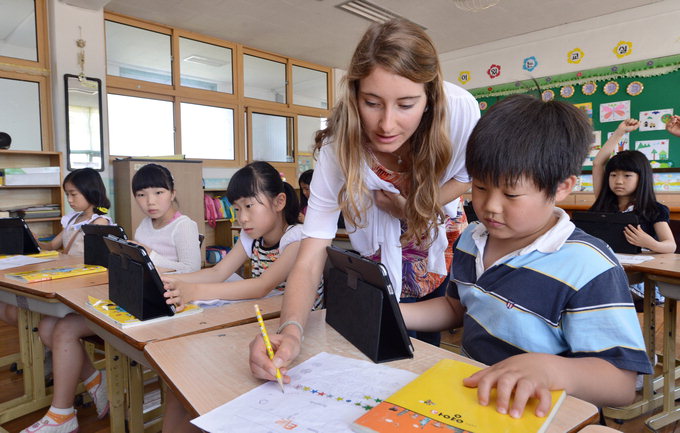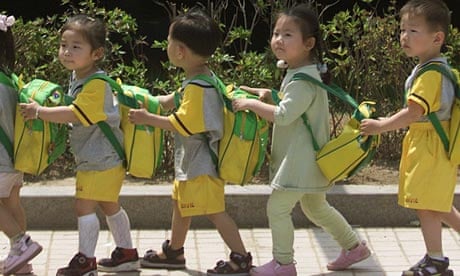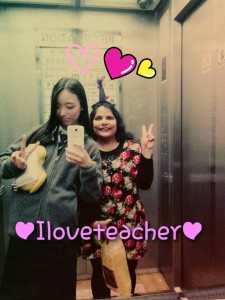
How to teach English in Korea
This week we will explore how to properly prepare for Adult classes, and for younger learners elementary to middle school aged students. Often times when you search the job postings on the internet you can find a variety of jobs. Those internet job postings, often seem to boast that you do not need any teaching experience at all. In fact if you are a recent graduate of any discipline you can find work in South Korea. Owing to the popularity of programs like GEPIK, EPIK and TALK many recent graduates ( GEPIK/EPIK), people with associate degree or people with only 2 years in university (TALK) can come and teach in Korea.
While technically this is true, there some realities that need to be explored. The most serious being an inexperienced workforce. For the native teacher it is a fulfilling experience no doubt but not without hardships. For many there is a rocky start. Oftentimes you get a Korean teacher as your assistant or helper but in most cases it’s like ‘blind leading the blind’. This post by no means is supposed to discourage you or be a downer but it will be a ‘dose of reality’.
In this week’s post i will talk about different approaches for teaching various age groups and real life situations and issues that you will likely face in your classroom should you decide to come and teach in Korea. Today’s post I will talk about teaching younger age groups. In my next post I will cover teaching Adults and Business English in Korea.
Teaching younger students:
This post is Part I. In this post, I will talk about how to teach younger students. If you are thinking about teaching in Korea you may have seen many jobs to teach in public schools or private institutions. These jobs require teaching elementary school kids, middle schoolers and high schoolers. Believe it or not there is no ‘cure-all’ approach. Different age groups require different approaches. Since each age group has specific requirements for better classroom management I will subdivide them into 2 groups:
- Kindergarteners and Elementary school students
- Middle school and High school students
Teaching Kindergarteners and Elementary school students:

Students in both these age groups are very young. They require a lot of attention and patience. Being patient is the key to manage classes with really young ESL learners. You must also keep in mind that younger kids have shorter attention span so they get distracted easily.
Many native ESL teachers in Korea find it difficult to work with non-English speaking students. Compared to the older students younger kids may have minimal to no background in English which means they don’t understand what you are saying half of the time and (if you don’t know their native language) neither do you. Language barrier can create many issues in the classroom. In order to avoid such issues try to learn their language. Don’t worry if you can’t speak it fluently. Even knowing a little will help break down barriers.
As I mentioned above since younger students get distracted easily make your lesson more interactive…more involving. Try using different activities and ESL games that are designed to review vocabulary and grammar. Students usually learn better and faster if they are having fun.
Another approach that works wonders with young learners is ‘repetition’. The more you repeat the more you retain. Make the students review and practice the vocabulary and expressions taught in class. For example,take a surprise test to check how much they remember but don’t call it a ‘test’ call it a ‘quiz’. Believe me it works every time.
Also always try to praise your students for good work and effort. Little kids love a smiley face or a star next to their work. They grin from ear to ear if the teacher says, good job or excellent and they positively go nuts over stickers. For example an excellent approach for encouraging your students and good classroom management is a ‘monthly sticker system’. Make a poster with all your students name. Each day based on their performance give them a smiley face for good work and an angry face if they misbehaved or did not do their work. At the end of the month reward the students with the most smiley faces.
Remember the three P’s : Patience, Praise and Practice. These are the foundations for teaching any age group but especially young learners.
Teaching Middle school and High school students:

Now we are talking about teenagers. Anyone who has dealt with a teenager or if you remember your own teenage years you know it’s a roller coaster ride and not always fun either. Most common issues Korean middle and high schoolers are :
- your students may not seem motivated
- conversation activities may dry up quickly
- it’s like pulling teeth getting them to talk or say anything at all
- students arrive late and are usually tried or sleepy
- students don’t remember what you covered in your last class
- students seem more focused on their cell phones rather than do anything in class
Additionally you don’t know how to cater for the mixed abilities in your classroom. You feel like the more advanced students aren’t learning anything and the slower students cannot keep up. The textbook is outdated, your students seemed bored and you dread finishing a lesson early and not knowing what to do with the rest of the class time.
This brings us to our next set of P’s for this group: Patience, Perception and Perseverance.
The key is to show patience. Dealing with teenagers can be frustrating but you have to be patient. If you lose control, yell or are sarcastic and embarrass a student you will lose all credibility. Adolescence is a confusing phase. Kids are very sensitive, emotional and vulnerable. If you are not patient your students will not trust you or come to you for help.
Just like patience, perception is very important in dealing with teenagers. The dictionary describes it as ‘an individual’s perception or judgment of a situation’. If you are observant you can see problems before they occur and thus ‘nip it in the bud’. Moreover, you will be able to better read your students and consequently adjust your lesson to get the most out of it. For example, if students look unusually tired put the textbook aside and try an activity or just talk to them.
Lastly, very important for this age group is to show steadfastness despite difficulty or delay in achieving success. Be consistent and don’t give up!
Try using 5 minute fillers, brain storming, role play etc to supplement your lesson so you don’t have to worry about finishing your lesson early.
Remember the Three P’s for this group: Patience, Perception and Perseverance.
I hope this post will be helpful and informative for teaching younger ESL students. If you have specific questions or comments please drop a line. My next post will cover teaching Adult ESL students in Korea.

